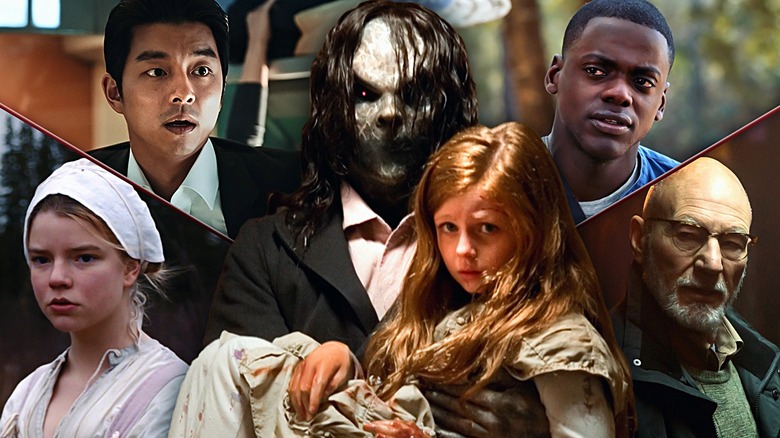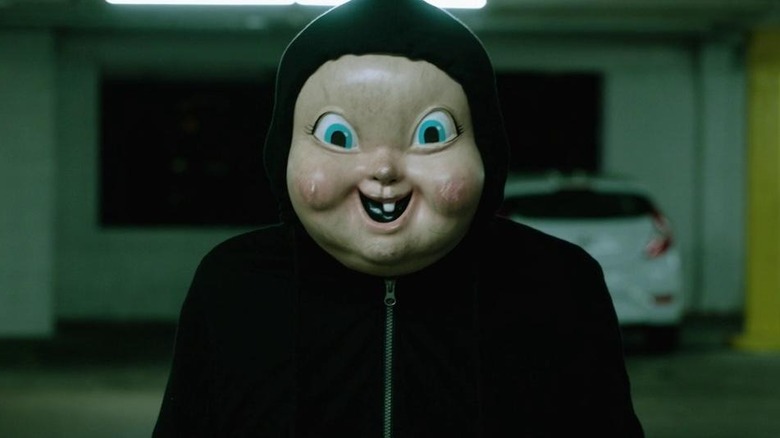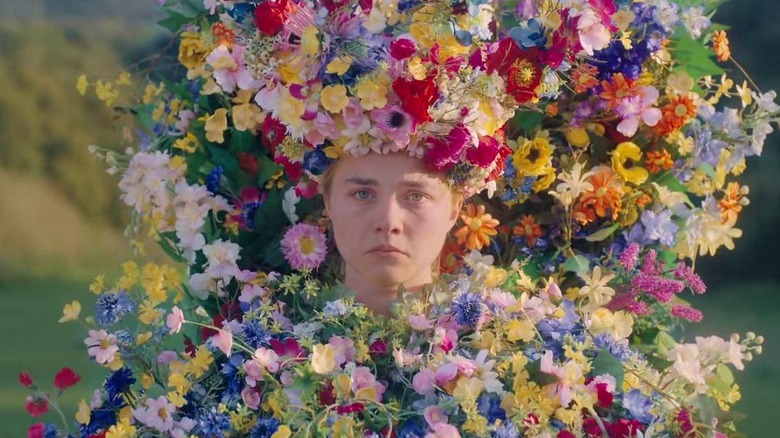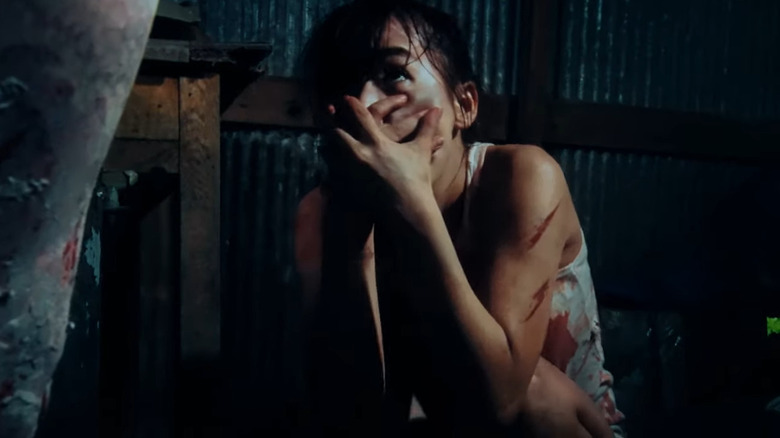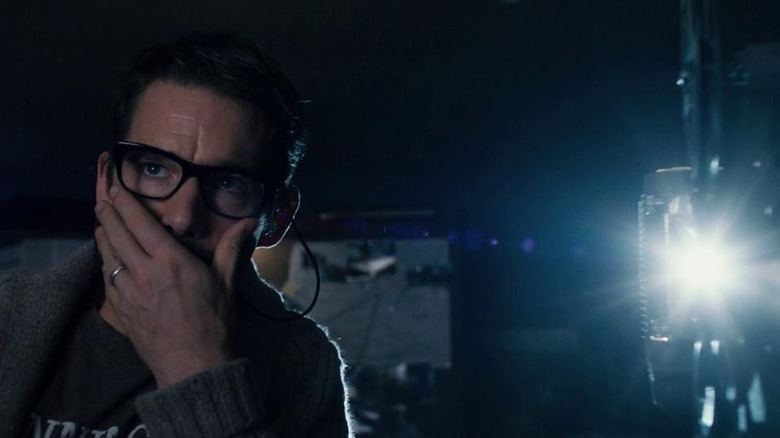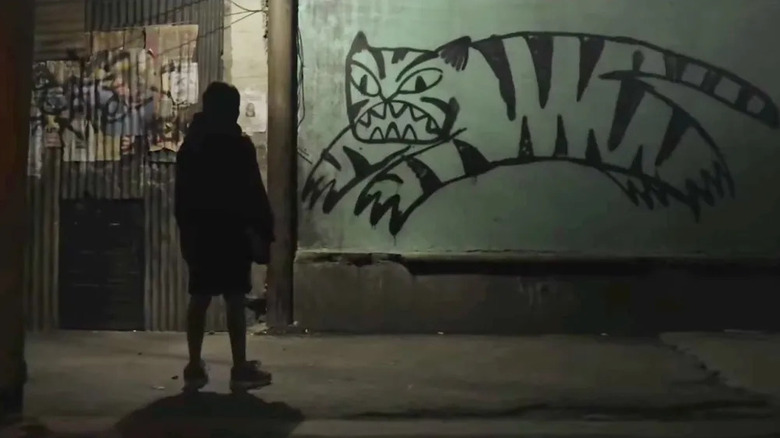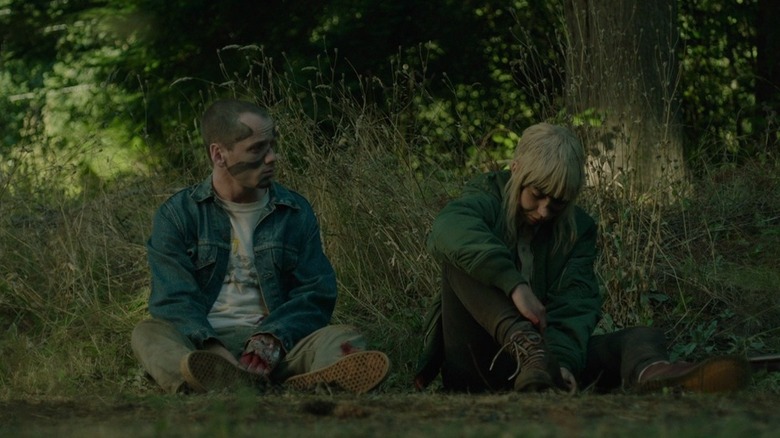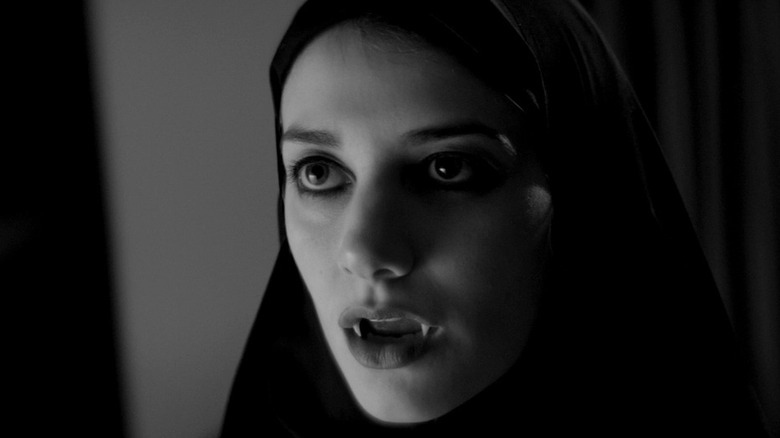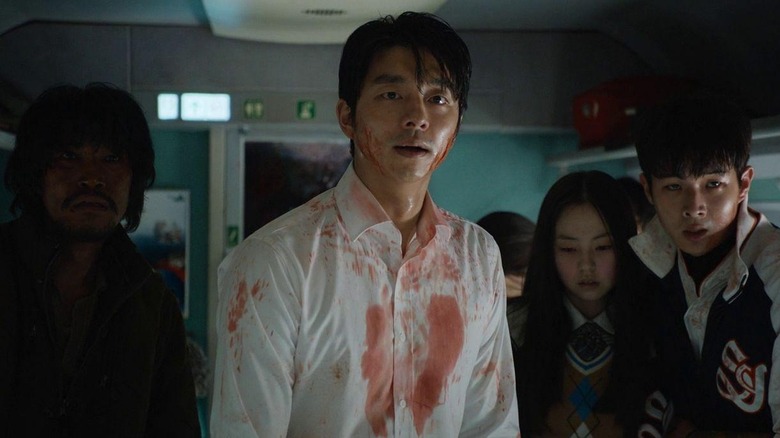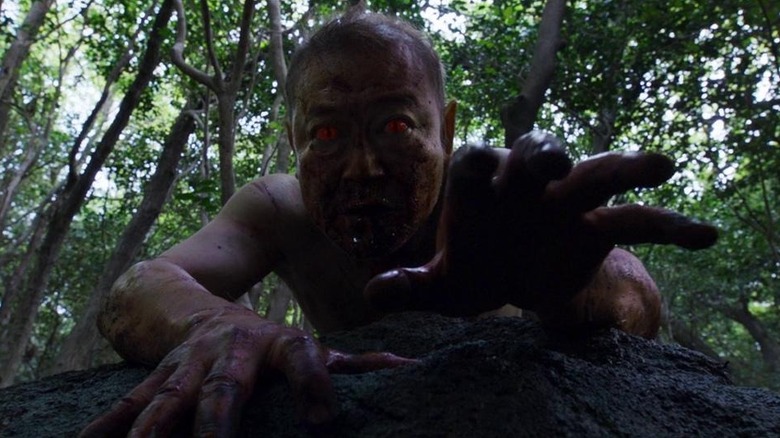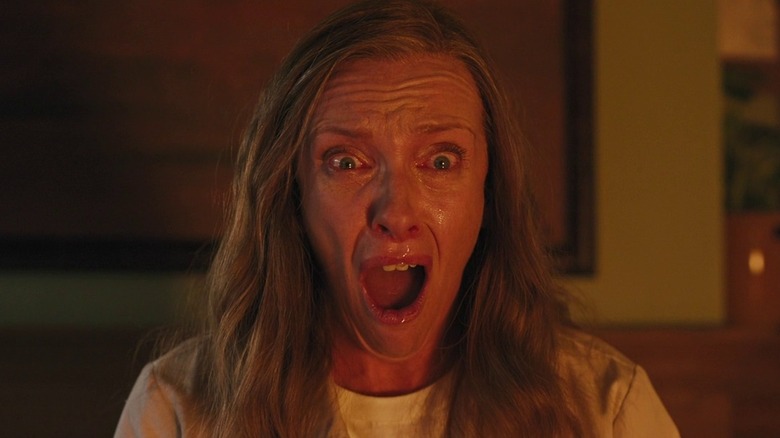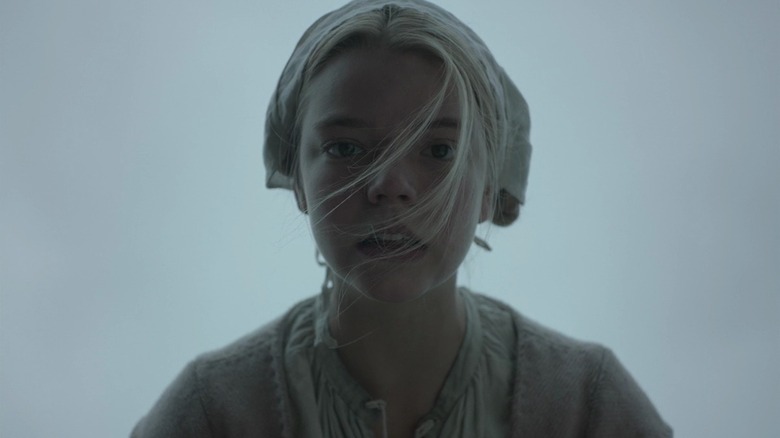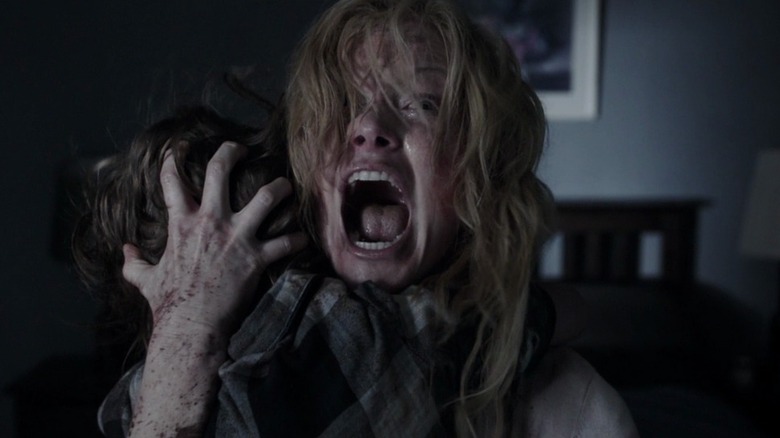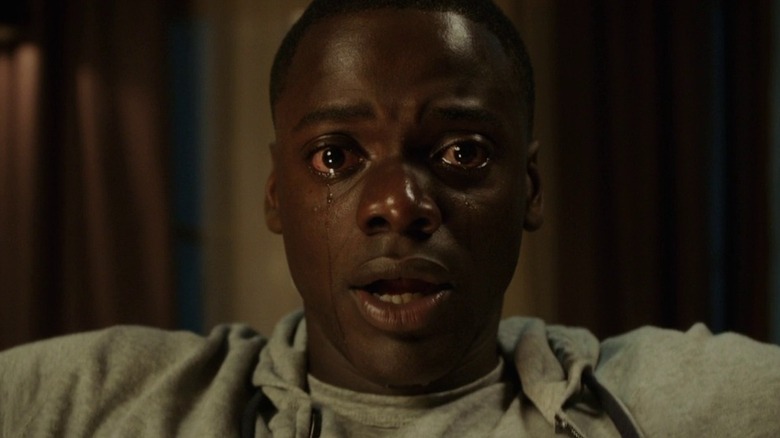The 15 Best Horror Movies From The 2010s, Ranked
In 2019, /Film ranked the 100 best horror movies of the past 10 years, meaning throughout the 2010s. It was a blast to revisit some of the most iconic films of the decade, from instant classics to hidden gems even some horror fans may not have heard of. But it can be hard to judge properly what's truly "the best" when you're still in that moment. Sometimes, you need to take a step back. You need some distance because you might watch a movie and love it in the moment but then find yourself five years later wondering what it was you enjoyed in the first place.
That's why it seems prudent to go back and rank again the best horror movies from the 2010s. Granted, many of the films at the top of the previous list still make appearances here, but there are other films that have undergone a much-needed reappraisal. Either way, these are scariest, most inventive horror flicks of the era that continue to hold up to this day
15. Happy Death Day
The 2010s really marked a return to "elevated horror" or horror that tried to opt for loftier themes than merely scaring teenagers. That's all well and good, but sometimes, you still appreciate a great popcorn flick. And that's "Happy Death Day." The film follows college student Tree Gelbman (Jessica Rothe) who finds herself in a time loop where she resets the day every time she's killed by a stalker in a baby mask.
"Happy Death Day" has many influences. Most obviously, there's "Groundhog Dog," but you also find pieces of "Scream" and "Back to the Future" in there as well. This is a film that wears its inspirations on its sleeve, putting them all in a blender to produce something wildly entertaining with just enough scares to keep you on your toes. "Happy Death Day" is the horror film you show your friends who aren't into horror to show how the genre isn't all gore and guts. Don't worry; there are plenty of those later on this list...
14. Midsommar
Before you even get into the Swedish cult in "Midsommar," you know you're watching something deeply evil and disturbing. The opening sequence sees Dani (Florence Pugh) desperately try to get her checked-out boyfriend Christian (Jack Reynor) to take her concerns about her family seriously. Only too late do we learn Dani's sister took her own life and that of their parents, meaning Christian can't break up with Dani quite yet.
"Midsommar" is a movie about grief and navigating relationships, both romantic and familial. Despite the horrific things the Hårga do throughout the film, they are united and are there for Dani in a way no one else is. The ending of "Midsommar" sees her being embraced by the village, so even though she lost her family initially, she gains a new one by the conclusion. It's disturbingly sweet in a way, even if we just saw a man in a bear suit get burned alive.
13. One Cut of the Dead
Found footage. A movie within a movie. Zombies. These concepts have all been done to death, and in the wrong hands, they can feel derivative of greater works. However, writer/director Shin'ichirō Ueda infuses them with new life (pun intended) in the Japanese zombie flick "One Cut of the Dead." Takayuki Higurashi (Takayuki Hamatsu) is directing a zombie movie within the film itself that isn't going well, so to give his effects a boost, he summons real zombies from the dead that begin devouring his crew.
The film takes some unexpected turns, making it one of the scariest, funniest, and somehow most heart-warming horror movies of the 2010s. It's a masterclass of low-budget filmmaking and a celebration of the art form. At this point, it's old hat to be meta. Everything's meta these days, often in the pursuit of ironic detachment. But "One Cut of the Dead" uses its acknowledgement that all of this is fake to show just how inventive artists can get in pursuit of that one perfect shot.
12. The Cabin in the Woods
Speaking of meta horror movies, "The Cabin in the Woods" is also one of those. But it's clear this is a film that loves the genre and simply wants it to do better, as we see a group of friends head into a cabin in the woods one weekend only to get killed off one by one. But there's something else going on to elevate this above a mere "Evil Dead" ripoff, as everything happened is a result of a laboratory that works to ensure specific tropes are followed or else the world will end.
"The Cabin in the Woods" dissects why we, as the audience, expect horror movies to be exactly the same. Horror is built around keeping things surprising, but if you know what's going to happen, then what's the point? In a way, "Cabin in the Woods" may have ushered in a new dawn for the genre. While the 2000s are mostly defined by torture porn and slashers, the 2010s saw the rise of auteurs like Ari Aster, Robert Eggers, and Jordan Peele, experimenting with different styles and tones. Maybe this film killed the old gods so that the new ones could rise.
11. Sinister
A scientific experiment found that "Sinister" is the scariest film ever made. Naturally, horror's subjective, and what's scary to one person may seem tame to another. But there's no denying that no matter what your taste is like, "Sinister" is pretty darn frightening, especially when you get to the scene of Ellison (Ethan Hawke) watching disturbing home movies depicting gruesome deaths that unleashes something supernatural in his own household. The jump scare featured in the lawnmower tape alone is enough to get anyone to make sure there's nothing lurking underneath their couch.
Rest assured, the jump scares in "Sinister" work as well as they do because they're balanced by an ever-present state of dread. It's probably because there's not much in the way of Ellison trying to find a way to defeat the haunting Bughuul, aka Mr. Boogie (Nicholas King). The demon's simply a presence you feel in every frame, even when he doesn't appear. The ending doesn't just feel tragic but an inevitable consequence of Ellison messing with things he shouldn't.
10. It Follows
"It Follows" feels like a simple enough STD parable about a demon that persistently follows you and gets passed to another person via sex. However, the real inspiration behind "It Follows" is in a childhood nightmare of writer-director David Robert Mitchell where something that could look like different people would follow him. Therein lies the true terror of "It Follows."
When you're watching this movie, you find yourself scouring every frame to see if you can find someone who looks slightly out of place. Even when no one is around, you can't escape a sense of dread that it could be right around the corner. Like the main character Jay (Maika Monroe), you keep eyes on any exits and entrances it could come in from.
That's not even getting into the existential terror "It Follows" presents where one has to fear about getting close to anyone for fear the entity could kill them next. "It Follows" lingers in the mind because you can't help but try to figure out how you could escape this scenario when the only reprieve seems to be death, sooner or later.
9. Tigers Are Not Afraid
Many horror films use zombies and ghouls to speak of real-world terrors. They function as allegories to deliver impactful messages audiences can hopefully learn from. "Tigers Are Not Afraid" brings in fantastical elements but doesn't shy away from shining a light on drug cartels tearing families apart.
The film's one part crime horror and one part magical realism as a young girl, Estrella (Paola Lara), joins up with a group of street orphans after her mother vanishes, likely due to a human trafficking ring. Throughout the movie, Estrella experiences disturbing mental images of her mother. "Tigers Are Not Afraid" is a horror movie much in the same way "Pan's Labyrinth" is, but that single genre description also undersells the story. It's a film that has far more on its mind than trying to make you leap out of your seat with a jump scare. It's trying to show you the reality many in the world genuinely have to face.
8. Green Room
A punk band trapped at a Neo Nazi venue after witnessing a murder. That simple description is all you need to lock in for the wild ride that is "Green Room," where even before the first death occurs you know precisely how much danger the protagonists are in. And it's made all the more effective with being set in such a claustrophobic space, as much of the film is set inside a bar. There are only so many places for the band to run.
And director Jeremy Saulnier doesn't hold back on the gore. It's a total splatterfest, and when /Film interviewed Saulnier for "Green Room," he got the exact reaction out of audiences he wanted: "The gasps are real. People are sort of white-knuckled watching this movie. That's what I love. The involuntary response their bodies create." It's a brutal movie, but the thing that makes it an excellent horror tale is how it never loses sight of the characters' humanity and simply sends them through a wicked ride through Hell and back.
7. A Girl Walks Home Alone at Night
The title alone is enough to induce dread: "A Girl Walks Home Alone at Night." It instantly conjures images of a woman in danger from potentially every man she encounters, but what makes this one of the best unconventional vampire movies is how it flips that idea on its head. The Girl (Sheila Vand) is a vampire enacting vengeance on terrible men, and she forms a strange bond with one man who showed her kindness, Arash (Arash Marandi).
"A Girl Walks Home Alone at Night" isn't the horror movie to turn on when you want guts and chills. At times, it feels more concerned with creating a vibe, drawing with German expressionism and heavily relying on the use of shadow to bolster mood. This is a film for anyone who's ever felt like they've existed on the fringes of society. Vampires don't necessarily have to be monsters, with The Girl occasionally defying her bloodlust. You may not be scared out of your wits, but you may just look at the world a little differently.
6. Train to Busan
It's not hyperbole to call "Train to Busan" the best zombie film of the 21st century. The zombie action is top-notch, effectively utilizing fast zombies to create an even greater sense of dread as our main cast find themselves in the middle of this outbreak while on a train. They're trapped in a confined space, with most of the characters working together to overcome these obstacles (keyword there is "most").
But like all the other great zombie flicks, "Train to Busan" has more on its mind than gore. It's about the intersection of individualism and collectivism, with characters only successfully getting away when they work as teams. Seok-woo (Gong Yoo) is very much an individualist at the start, even missing his daughter's recital. By the end, he's realized the need for sacrifice for the greater good, leading to the scariest scene in the entire film that will fill you with dread and bring a tear to your eye.
5. The Wailing
"The Wailing" is the rare film that as soon as you finish watching you just want to watch it again to see what you missed the first time. It's a horror film that keeps you guessing as you see policeman Jong-goo (Kwak Do-won) investigate a string of violent murders that appear to coincide with the arrival of a Japanese stranger to a small village. But are these all coincidences, or is there something supernatural afoot?
Things take a turn when a mysterious illness afflicts Jong-goo's own daughter, meaning he goes from the more passive role of a police officer to the active one of a father who wants to do what's right by his child. There's also his turn to different religions, neither one fully offering the solace he desperately craves. "The Wailing" defies traditional film conventions, merging different horror sub-genres into a thriller and dark comedy story that nothing has been able to match tonally since.
4. Hereditary
"Hereditary" truly laid the groundwork for a slew of elevated horror films about grief and trauma to take the forefront of the back half of the 2010s, leading into the 2020s. The film opens the central family dealing with a death, but it was another deadly scene that laid the groundwork for the rest of the plot. You know what we're talking about if you've seen the film, as Charlie's (Milly Shapiro) death scene is genuinely upsetting and horrific, made even more heart-wrenching when Annie (Toni Collette) discovers her daughter's dead body the next morning and lets out a disturbing scream.
"Hereditary" utilizes supernatural horror, but that's almost secondary to the distress of watching a family tear itself apart. Ari Aster immediately proved himself a master of the craft, infusing the film with instantly iconic imagery, from Annie screaming at the sight of her husband bursting into flames to her later beheading herself with piano wire. It's the rare film that unsettles you to your core and just makes you want to stare at a wall while you reconsider your life after.
3. The Witch
Robert Eggers can't stand "The Witch" these days, but that doesn't mean horror fans should ignore it. Like "Hereditary," it laid the groundwork for a lot of horror films that came out in the years that followed and actually deals with similar themes. It tackles a 17th century Puritan family living in a remote area who are preyed upon by an evil force haunting their farm, causing them to give into their paranoia and accuse one another of awful things.
Thomasin (Anya Taylor-Joy) gets much of the focus, as she wants to step away from her patriarchal-dominated household to explore more things, which is what the witches have to offer her. But the horror doesn't lie in over-the-top displays or jump scares. There's a foreboding ambience permeating the film's runtime, aided greatly by a subtle yet impactful score. And "The Witch" knows how to take its time, only allowing the rare burst or relief to the tension. Witches want to live deliciously, but it's humans who are more destructive than anything else.
2. The Babadook
When one thinks of classic horror movie monsters, many of them, from Jason Voorhees to Michael Myers, originated decades ago. But the 2010s got their own icon with the Babadook, a top-hat-adorned creature who serves as a metaphor for depression and grief. Amelia (Essie Davis), along with her son Samuel (Noah Wiseman), is still reeling from the death of her husband, and when she reads her child a haunting bedtime story, the creature comes to life to fill them with anger and resentment.
However, some of the most disturbing scenes in "The Babadook" are when the monster isn't on screen at all. It's heartbreaking to watch Amelia verbally berate her son. Despite going through an immense tragedy, the pair's grief, as well as the Babadook itself, have manifested because they haven't properly processed said grief. The Babadook isn't something you can get rid of; it's something that remains with you as you find healthier ways to cope with loss.
1. Get Out
"Get Out" isn't just the best horror movie of the 2010s. It marked a seismic shift in the culture. Now, whenever there are cinematic montages of films from the 2010s, the image of Chris Washington (Daniel Kaluuya) with tears streaming down his face will forever be there. It introduced the line "I would have voted for Obama for a third term if I could" to the greater lexicon to signify when someone is trying to performatively appear as an ally. "Get Out" is quite simply a masterpiece.
The set-up seems simple enough: Chris is about to meet his girlfriend Rose's (Allison Williams) family for the first time and uncovers how they put the minds of their white cohorts into Black bodies, a one-to-one metaphor for cultural appropriation. And humor functions as a Trojan horse for the terrors that follow. This is a film that's aware of horror film tropes (and expects its audience to know them, too) and expertly subverts them.
"Get Out" isn't just a great horror movie but established Jordan Peele (known for his sketch comedy background up until this point) as a new voice in horror, leading to other fantastic films like "Us" and "Nope." I would have put "Get Out" in a second "Best Horror Movies" list if I could.
